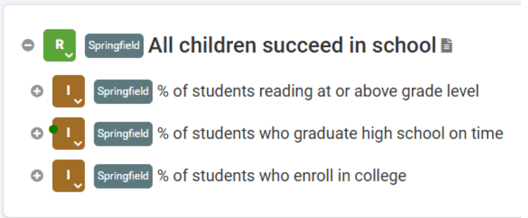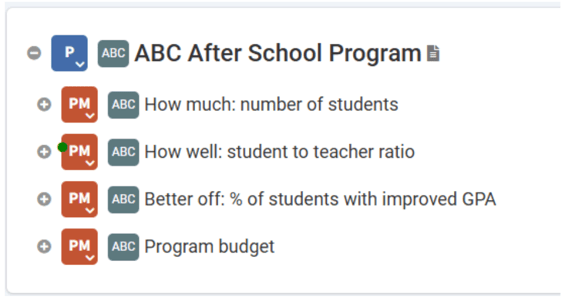Indicators and Performance Measures
Indicators and performance measures are types of measures that help quantify achievement or success.
Notes: Users with admin permission can change or add container types and measure types, as well as change icons and other properties of all scorecard objects.
For paid subscriptions, a variable is a no-cost alternative to an indicator or performance measure, with certain limitations.
Indicators are typically used to quantify the achievement of a result. Examples of an indicator could include:
- Number of babies born with low birth weight
- Amount of carbon dioxide emission
- Percent of children with active asthma
- Violent crime rate
Along with the result itself, indicators are typically added to a result container.

Performance measures are typically used to quantify the achievement of a program, answering “how much,” “how well,” or “better off” questions. Examples of a performance measure could include:
- How much: Number of women receiving services
- How well: Attendance Rate
- How well: Student to teacher ratio
- Better off: Percent of students who improved GPA
Along with the program itself, performance measures are typically added to a program container.

An indicator or program measure is typically created on the fly, while creating a scorecard. But you can also create measures from scratch.
Any existing measure in your instance can be added to any container, then edited as needed for that container or scorecard.
Once measures are set up, you can enter measure and target data and set forecast values.